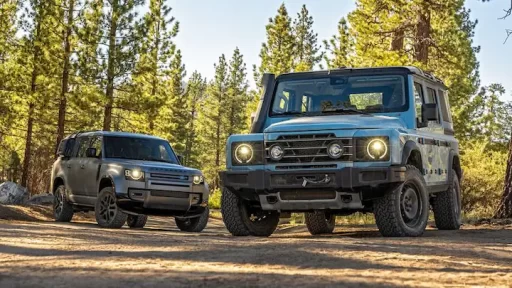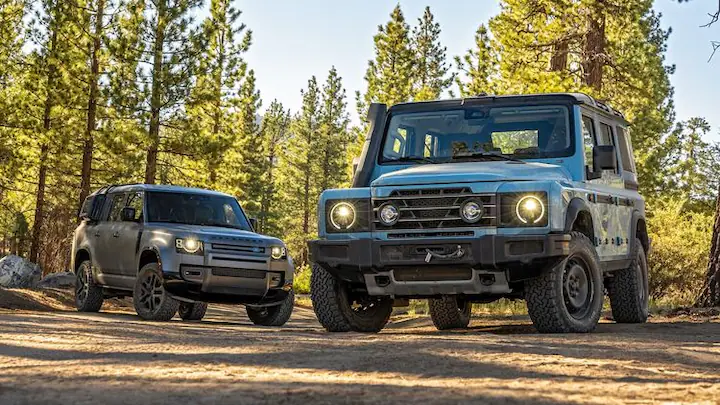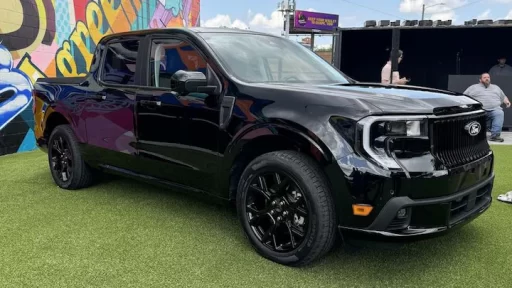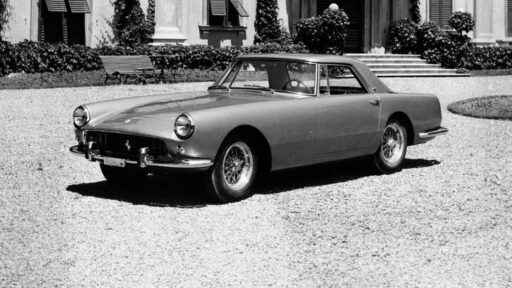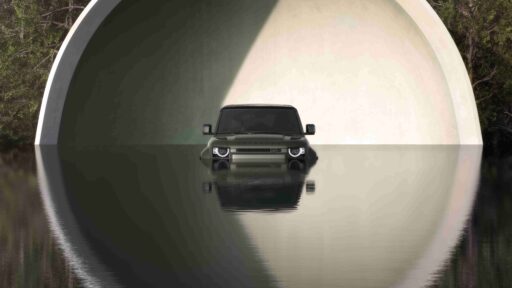There’s a certain magic when juxtaposing an older, rugged vehicle with its modern counterpart, blending nostalgic charm with state-of-the-art convenience. This luxury SUV comparison test spotlights the 2024 Ineos Grenadier, a nod to the iconic Land Rover Defender with its boxy design and off-road capabilities.
It’s a tribute to the past crafted to challenge contemporary contenders. Conversely, the 2024 Land Rover Defender has transformed into a sleek, modern marvel, shedding its rugged looks and vintage mechanics for a comfortable package while retaining exceptional off-road prowess. It’s the ultimate family wagon for today’s adventurers.
Visually, this comparison might not appear intuitive. Yet, on paper, these two British off-roaders align perfectly. Both house a 3.0-liter inline-six engine and are built to conquer tough terrain while exuding a charisma that sets them apart from other rivals. To truly understand them, we embarked on an adrenaline-pumping adventure through the rugged trails near Big Bear, California, pushing these SUVs to their limits in extreme conditions while also assessing their on-road performance.
READ MORE: Subaru of America Reports Significant July Sales Increase

The Players The 2024 Land Rover Defender 130 Outbound, a long-body variant, has found favor among American consumers since its new generation arrived in the U.S. in 2021. It’s a favorite among those seeking a vehicle capable of weekend camping trips and luxurious city rides. The “130” in its name signifies the longest bodywork offered by its manufacturer, providing ample space and comfort for both passengers and gear. The Outbound variant includes electronic air suspension and Terrain Response gear tailored for the roughest trails.
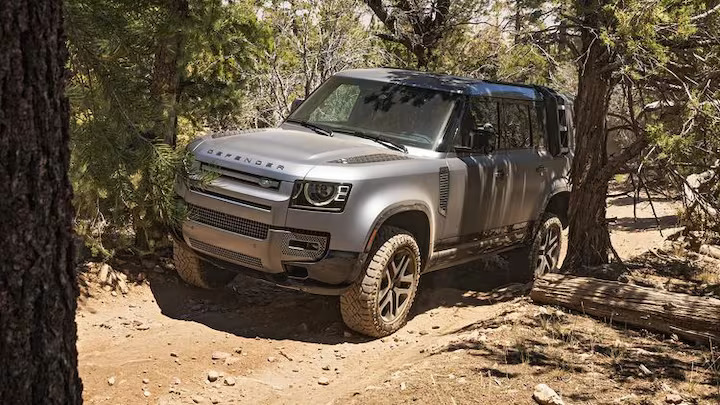
The Ineos Grenadier, on the other hand, is a product of an ambitious venture by Ineos, a colossal petrochemical company known for sponsoring the Mercedes-AMG Formula 1 team. Founded by Jim Ratcliffe, Ineos crafted the Grenadier as a modern successor to the original Land Rover Defender. Its boxy silhouette, upright stance, and nostalgic features offer a compelling, retro-inspired package. Our latest encounter with the 2024 Ineos Grenadier Trialmaster station wagon was enchanting, with its character and design setting it apart as a distinctive contender in this segment.
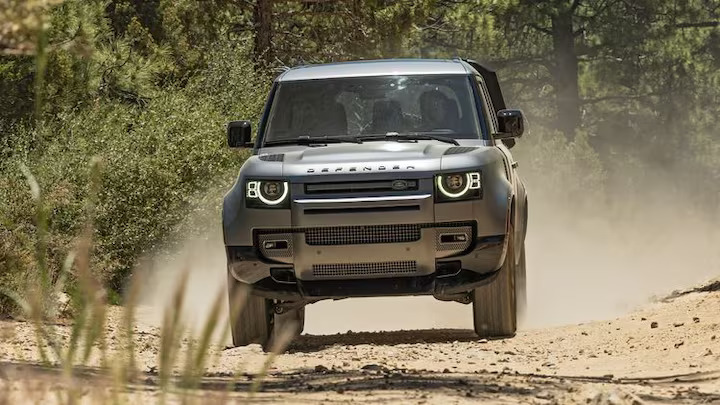
Both the Land Rover Defender and Ineos Grenadier aim to conquer challenging terrain while bringing joy to drivers. Each achieves this goal through distinct methods, and our extensive testing highlighted their comparative strengths.
On The Trail Though most drivers will spend their time on pavement, a true comparison test demands we test these vehicles on the terrain they were designed for. Our adventure started on Gold Mountain Road, a fire-road trail north of Big Bear Lake. This trail’s switchbacks provided an ideal setting to evaluate each truck’s steering behavior.
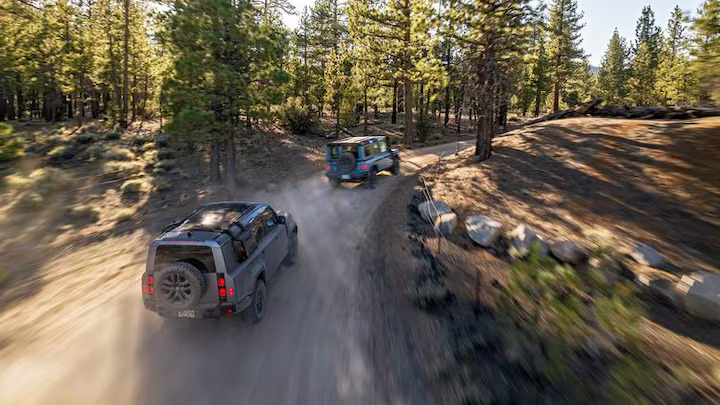
The 2024 Land Rover Defender impressed us with its electric power-assisted steering, making maneuvering effortless. In contrast, the 2024 Ineos Grenadier’s hydraulic-assisted recirculating-ball design required more effort, necessitating frequent adjustments to navigate the trail. This type of steering is typical in vehicles prioritizing off-road performance over comfort, but its nearly four full turns lock-to-lock meant constant adjustments to stay centered on the trail.
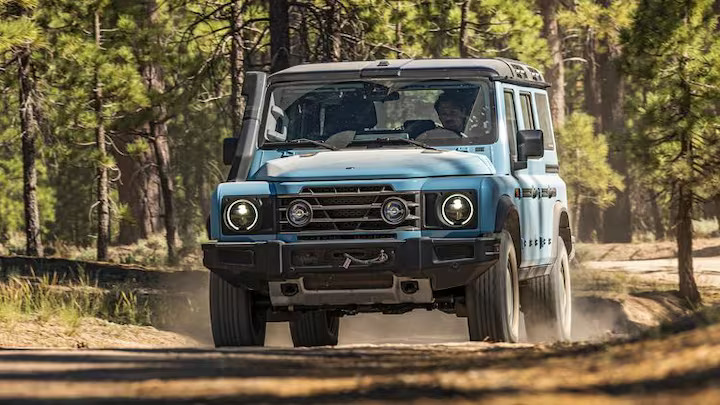
Maneuvering the Ineos at slow trail speeds felt like a workout, with considerable effort needed to initiate turns. This demanding experience aligns with Ineos’ off-roading intentions, but the required effort was notably strenuous at times, reminiscent of 1990s off-road vehicles. In contrast, the Defender’s modern interpretation with responsive steering facilitated smoother maneuvers, presenting a more user-friendly experience.
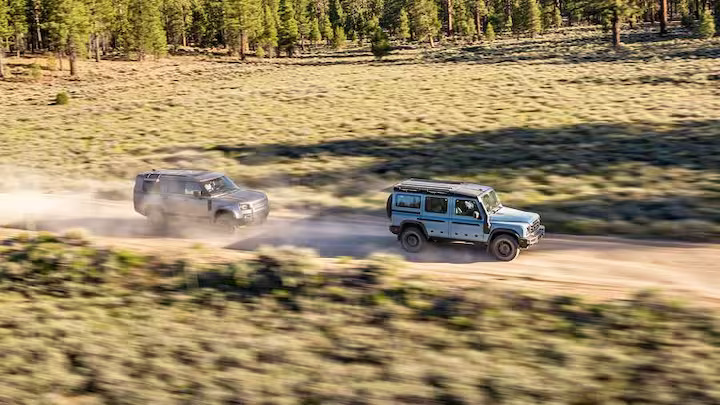
As we approached the top of Gold Mountain Road, we diverted to the John Bull Trail—a more demanding route that tested these off-roaders’ capabilities. Navigating small trenches provided our first opportunity to engage low range. A dedicated button on the Land Rover’s center console engages 4 Low, simplifying the process. If the transmission isn’t in neutral, a reminder appears on the screen to ensure proper engagement before the Defender begins crawling over rugged trails. Surprisingly, we didn’t need to lock the center differential to navigate the trenches, as the Land Rover exhibited impressive traction across the challenging terrain.
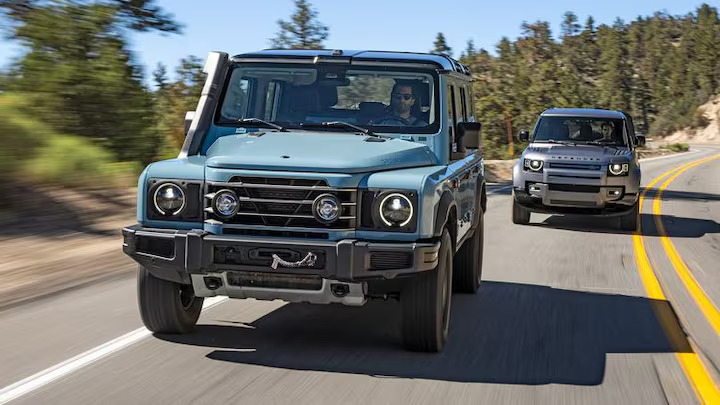
Navigating the same obstacle proved more demanding for the Ineos Grenadier. Switching between 4 High and 4 Low required significant effort. The Grenadier’s transfer-case shift lever was stiff and didn’t always operate smoothly, causing an obnoxious sound when engaging gear.
Despite being equipped with a low range and three differential lockers—front, center, and rear—the trail posed challenges for this SUV. Even with the Grenadier’s permanent four-wheel drive and solid axles articulation, we had to engage the center diff to navigate the obstacles. We encountered wheel slip but managed to navigate the trenches successfully.
The trenches were just the beginning of numerous obstacles on the trail. As we progressed, we faced a challenging rock-crawling passage where the Grenadier excelled with its 36.2-degree approach angle, 28.2-degree breakover angle, and 36.1-degree departure angle.
The Defender 130’s air suspension enhances its ride height, improving its approach, breakover, and departure angles for greater clearance. However, its width and longer wheelbase presented challenges on rugged trails. The extended wheelbase compromised the breakover angle, occasionally causing the belly pan to scrape the ground. Although we avoided body damage, the Grenadier outperformed the Defender in this area.
Overall, the Land Rover Defender emerged as the more user-friendly option on the trail. Its modern hardware and intuitive technology facilitated smoother navigation of challenging obstacles and rugged terrain. The Ineos Grenadier, while impressive with its robust off-road capabilities, relied on traditional off-road technology that proved effective but cumbersome. Its steering and ride quality were less refined compared to the Defender.
On the Road On pavement, these SUVs exhibited distinct behaviors. The Defender offered a plusher ride with superior comfort and convenience. Thanks to its unibody construction and independent suspension, the Land Rover provided exceptional ride quality, effortlessly absorbing cracks and potholes. In contrast, the Ineos, with its body-on-frame architecture and coil-sprung live-axle suspension, felt bouncy and unpredictable. While drivers can acclimate to this characteristic, we preferred the Defender’s refined ride.
The Grenadier’s steering was also a drawback on the road. On straight sections, frequent minor adjustments were needed. When negotiating turns or maneuvering into parking lots, the effort required was greater compared to the Defender. The Land Rover felt natural, offering effortless steering manageable during extended road trips.
The Grenadier’s charm lies in its nostalgic design. Its boxy look, jet-inspired cabin, and old-school technology appeal to enthusiasts nostalgic for vehicles of yesteryear. In a market dominated by software-defined vehicles, the Ineos Grenadier emphasizes robust hardware and off-road prowess. Its cabin provides generous space and headroom, though entry and exit can be challenging due to its substantial ground clearance.
Meanwhile, the Defender’s cabin represents a modern interpretation that complements its overall design. The current-gen Defender features distinctive lines and contemporary styling, setting it apart in its segment. Its blend of go-anywhere capability and refinement makes it a standout choice. The Defender 130 offers exceptional spaciousness and modern conveniences, including wireless Apple CarPlay and Android Auto, and practical dashboard trays. The seats are firm yet supportive, and the overall design exudes a premium feel.
Decision Time The 2024 Land Rover Defender and the 2024 Ineos Grenadier each offer distinct strengths catering to different audiences while sharing a common purpose. They excel in transporting families and outdoor enthusiasts to remote destinations, appealing to urban audiences drawn to their rugged designs. However, one SUV emerges as superior in both scenarios.
The Land Rover Defender claims the top spot. Its modern features make it more enjoyable to drive, demonstrated on the trail where its unibody chassis, advanced transfer case, and independent suspension delivered exceptional capability. The Ineos Grenadier charms with its nostalgic appeal and matches the Defender’s off-road prowess, but its classic persona comes with compromises such as a bouncy ride and less responsive steering. These traits, while intentional to maintain the Grenadier’s character, highlight a noticeable gap in comfort and handling compared to the Land Rover. In today’s automotive landscape, the Ineos evokes nostalgia while the Defender combines desired modern features with uncompromising capability.
2nd Place: 2024 Ineos Grenadier Pros: Old-school design, jet-inspired cabin, tremendous off-road capability
Cons: Unrefined ride, high-effort steering, loud cabin
Verdict: The Ineos Grenadier pays faithful homage to the original Defender, but its old-school approach doesn’t entirely match today’s comfortable and equally capable off-roaders.
1st Place: 2024 Land Rover Defender 130 Pros: Air suspension, standout exterior design, modern interior
Cons: Not as much of a hardcore off-roader as before, pricey, long wheelbase isn’t ideal for all situations
Verdict: The Defender has changed drastically from the model the Ineos pays tribute to. Today’s Land Rover suits an audience seeking technology and comfort that’s more than capable off-road while returning good overall ride quality.
READ MORE: Honda’s Historic RA272 to Star at 2024 Rolex Monterey Motorsports Reunion
Subscribe today for the freshest car news delivered to your inbox
